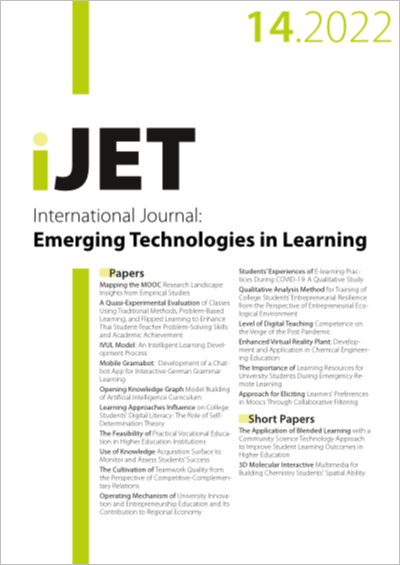The Feasibility of Practical Vocational Education in Higher Education Institutions
DOI:
https://doi.org/10.3991/ijet.v17i14.32811Keywords:
higher education, practical vocational education, feasibility analysis, Partial Least Squares (PLS) regression, Back Propagation Neural Network (BPNN)Abstract
Practical vocational education needs to lay stress on the integration of theoretical knowledge of common courses such as PE and other cultural courses with the professional knowledge of various high vocational courses. However, existing studies on practical vocational education emphasize more on theoretical research, while the practical and empirical research is slightly insufficient. For this reason, this paper attempts to analyze the feasibility of practical vocational education in higher education institutions. At first, the paper analyzed the influencing factors of the effect of practical vocational education on vocational college students, and adopted Partial Least Squares (PLS) regression to explain the independent variable and 17 dependent variables of the said effect and the relationship between each evaluation index and the corresponding evaluation criterion. Then, to verify the feasibility of practical vocational education in regional higher education institutions, this paper employed an optimized Back Propagation Neural Network (BPNN) to predict the effect of practical vocational education on vocational college students. At last, the experimental results proved the effectiveness of the constructed model and gave the conclusion of feasibility analysis.
Downloads
Published
How to Cite
Issue
Section
License
Copyright (c) 2022 Nan Zhang (Submitter); Dongning Kang, Bo Zhang

This work is licensed under a Creative Commons Attribution 4.0 International License.


